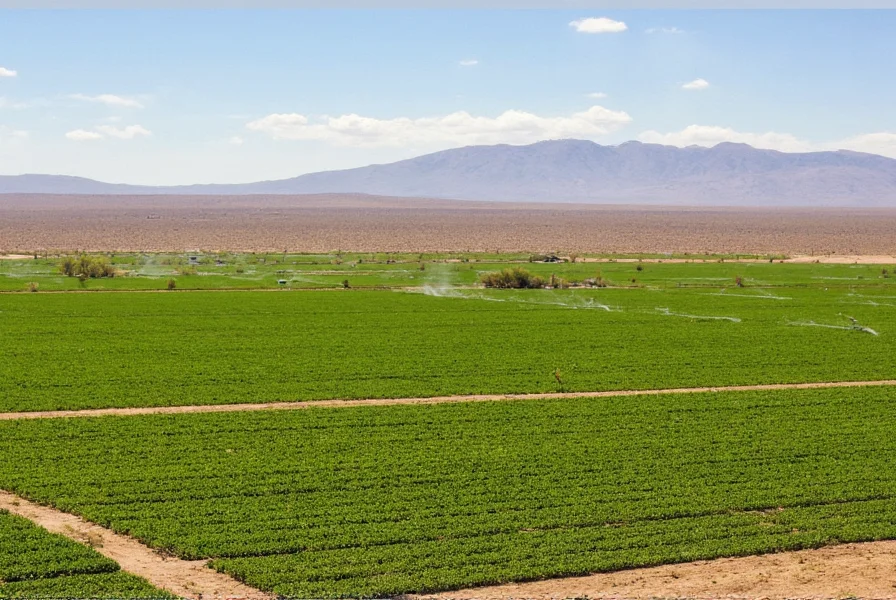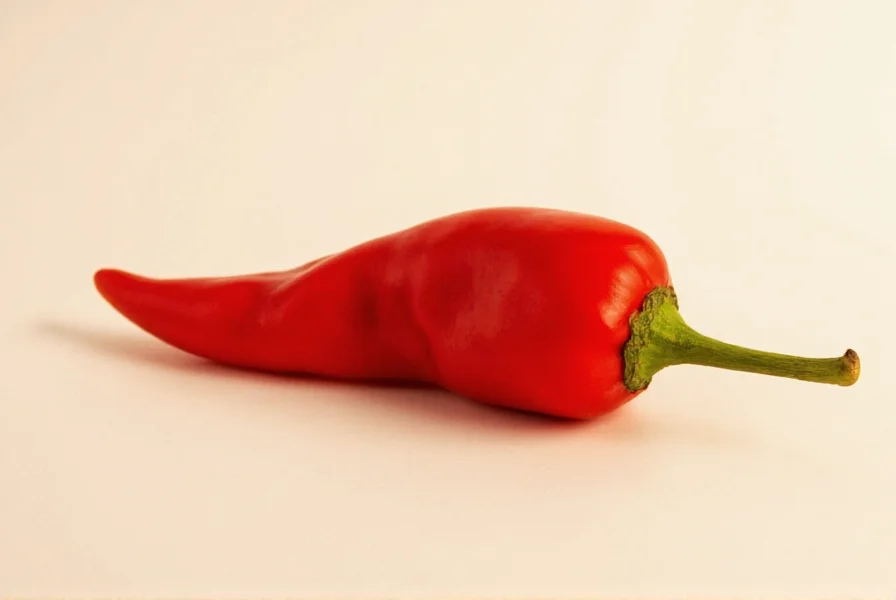Yuma County stands as one of America's premier agricultural regions, producing approximately 90% of the nation's leafy vegetables during winter months. This same agricultural excellence extends to chile pepper cultivation, where the desert environment creates ideal growing conditions for robust, flavorful peppers.
Why Yuma's Climate Benefits Chile Pepper Production
Yuma's unique desert climate provides several advantages for chile pepper farming that aren't available in other regions. The area receives over 350 days of sunshine annually, with minimal rainfall that reduces disease pressure on crops. During the critical growing season from September to May, daytime temperatures typically range between 70-85°F, while nighttime temperatures drop to 45-60°F—creating the perfect diurnal temperature variation that enhances pepper flavor development.
"The consistent sunlight and controlled irrigation in Yuma produce chile peppers with thicker walls and more consistent heat levels than those grown in more humid regions," explains Dr. Maria Rodriguez, agricultural specialist at the University of Arizona Cooperative Extension. "Our desert conditions minimize fungal diseases that commonly affect pepper crops elsewhere."

Top Chile Pepper Varieties Grown in Yuma
While Yuma produces numerous pepper varieties, several chile types thrive particularly well in the region's conditions:
| Pepper Variety | Heat Level (Scoville) | Harvest Season | Primary Uses |
|---|---|---|---|
| Anaheim | 500-2,500 | December-April | Roasting, stuffing, green chile dishes |
| Jalapeño | 2,500-8,000 | November-March | Salsas, pickling, fresh consumption |
| Cayenne | 30,000-50,000 | January-May | Drying, powder production, hot sauces |
| Bell Peppers | 0 | Year-round | Fresh market, cooking, salads |
Yuma's Chile Pepper Growing Season Timeline
Unlike traditional chile-growing regions that follow a single summer season, Yuma's mild winters enable a much longer production window:
- September-October: Planting begins as temperatures cool from summer highs
- November-January: First harvests of early varieties like Jalapeños
- February-April: Peak production season for most chile varieties
- May: Final harvests before summer heat makes cultivation difficult
- June-August: Land preparation and crop rotation period
This extended season makes Yuma chile peppers particularly valuable to commercial kitchens and grocery chains seeking consistent winter and spring supplies when other growing regions aren't producing.
Where to Find Authentic Yuma Chile Peppers
Consumers seeking genuine Yuma-grown chile peppers have several options:
- Yuma Farmers Market: Open Saturdays from 8am-1pm October through April at 250 S. 4th Avenue, featuring direct-from-farm chile peppers
- Local Grocery Chains: Many Yuma supermarkets feature "Grown in Yuma" produce sections during peak season
- U-Pick Farms: Several farms including Desert Valley Produce and Yuma Fresh offer seasonal U-pick opportunities
- Restaurants: Local eateries like Los Dos Molinos and La Morena feature Yuma chile peppers prominently in their dishes
When purchasing, look for the "Yuma Fresh" logo which certifies produce grown within Yuma County. This designation ensures you're getting peppers cultivated in Yuma's unique desert conditions rather than imported alternatives.

Culinary Applications of Yuma Chile Peppers
Chefs throughout the Southwest value Yuma chile peppers for their consistent quality and flavor profile. The region's low humidity produces peppers with thicker walls that hold up better to roasting and cooking processes.
"Yuma's Anaheim peppers have become our winter staple," says Chef Carlos Mendez of The KIVA Restaurant in Yuma. "Their consistent size and mild heat level make them perfect for our green chile stew and stuffed pepper dishes. The desert-grown peppers simply have more concentrated flavor than those from humid regions."
Local food traditions incorporate Yuma chile peppers into numerous dishes, including:
- Green chile stew with locally raised beef
- Chile rellenos using freshly roasted Anaheim peppers
- Salsas featuring Yuma-grown Jalapeños and tomatoes
- Stuffed squash blossoms with chile pepper filling
Tips for Growing Chile Peppers in Yuma's Climate
Home gardeners in the Yuma area can successfully grow chile peppers by following these regional-specific recommendations:
- Plant seedlings between September and October for winter/spring harvest
- Use drip irrigation to maintain consistent moisture without waterlogging
- Provide afternoon shade during summer months to prevent sunscald
- Choose varieties proven successful in desert conditions like 'Sandia' or 'Heritage'
- Amend soil with compost to improve water retention in sandy desert soils
"The key to successful chile pepper gardening in Yuma is understanding our unique microclimate," advises local master gardener Susan Thompson. "While our conditions are excellent for production, the intense sun and low humidity require some adjustments compared to traditional gardening methods."
Frequently Asked Questions About Chile Peppers in Yuma AZ
When is the best time to visit Yuma for fresh chile peppers?
The prime season for fresh Yuma chile peppers runs from November through April, with peak availability between January and March. This winter growing season takes advantage of Yuma's mild temperatures when other chile-producing regions have finished their harvests.
What makes Yuma chile peppers different from New Mexico chile peppers?
Yuma chile peppers typically have thicker walls and more consistent heat levels due to the desert climate's low humidity. New Mexico chiles often develop thinner walls and more variable heat because of higher humidity and different soil conditions. Yuma peppers also tend to have a slightly sweeter flavor profile.
Can I grow traditional New Mexico chile varieties in Yuma?
Yes, many New Mexico varieties like 'Sandia' and 'Heritage' grow well in Yuma's climate, but they require some adaptation. Gardeners should provide afternoon shade during summer months and maintain consistent irrigation. The desert environment often produces thicker-walled peppers with slightly different flavor characteristics than the same varieties grown in New Mexico.
How do I know if chile peppers are genuinely from Yuma?
Look for the "Yuma Fresh" certification logo on packaging or at farmers markets. This designation verifies the peppers were grown within Yuma County. At local markets, vendors can typically provide specific farm information. During peak season (November-April), most fresh chile peppers available in Yuma grocery stores are locally grown.
Why does Yuma produce chile peppers in winter when other regions don't?
Yuma's unique advantage is its mild winter climate with daytime temperatures ideal for pepper growth (70-85°F) while avoiding the freezing temperatures that halt production in traditional chile-growing regions. This "winter vegetable production" capability makes Yuma one of the few places globally that can produce high-quality chile peppers during the November-April timeframe.











 浙公网安备
33010002000092号
浙公网安备
33010002000092号 浙B2-20120091-4
浙B2-20120091-4